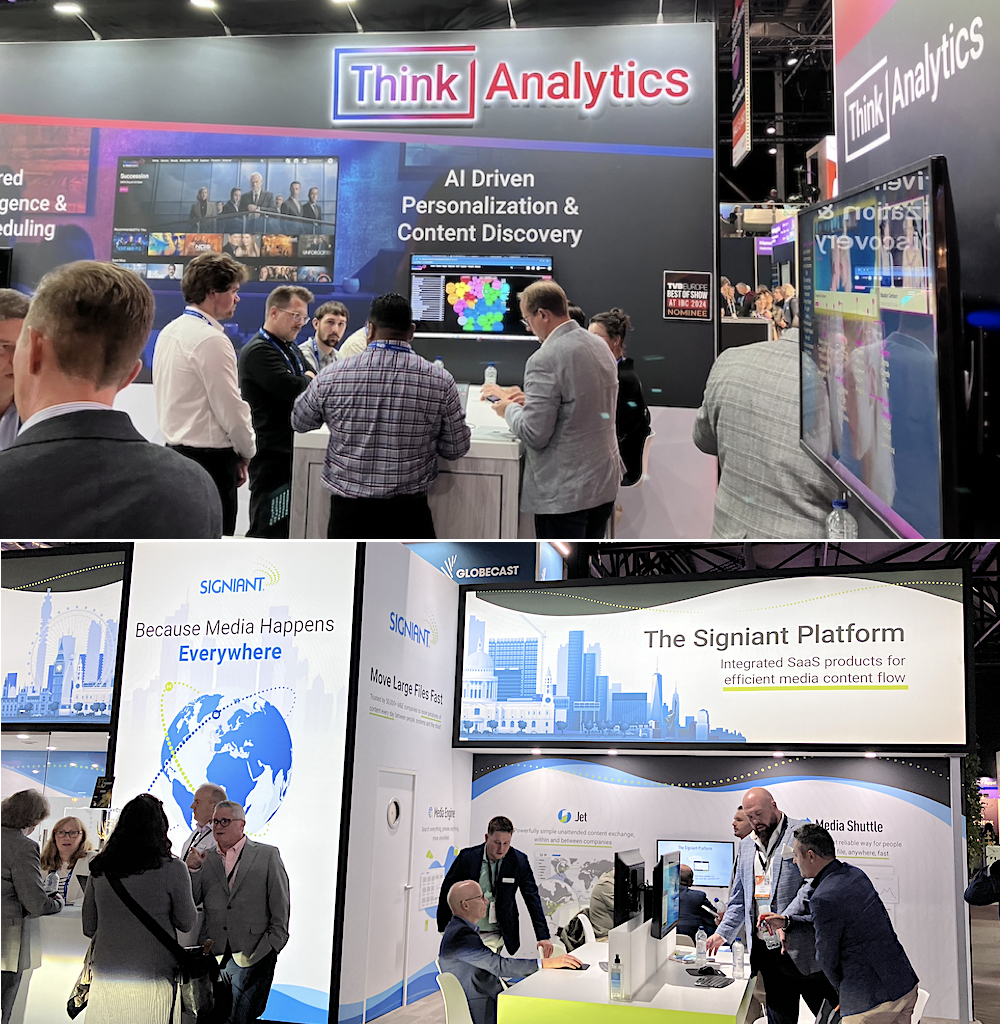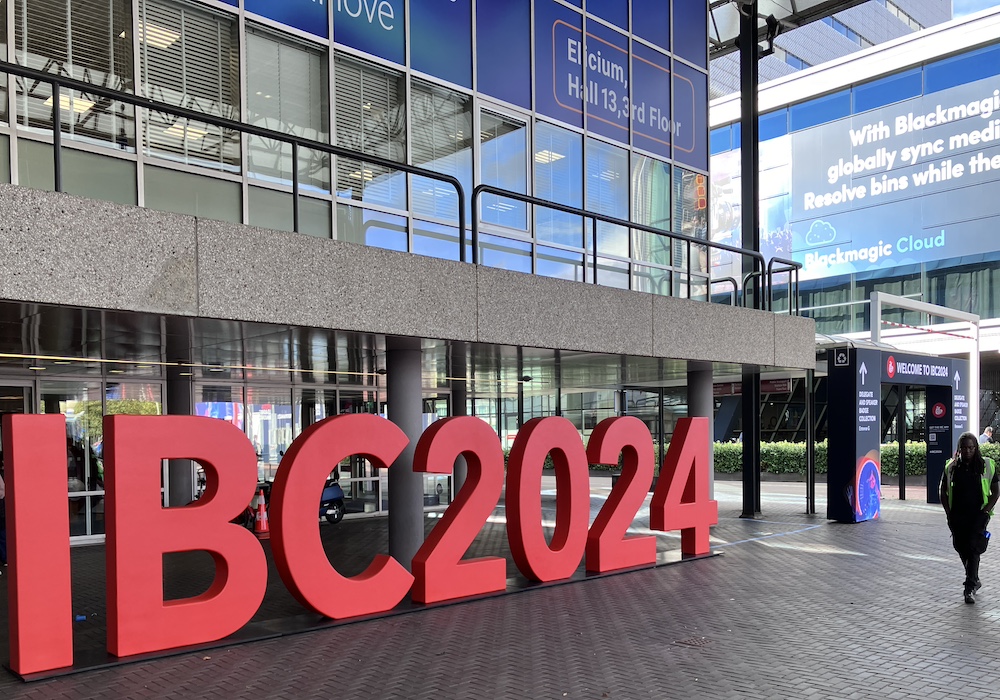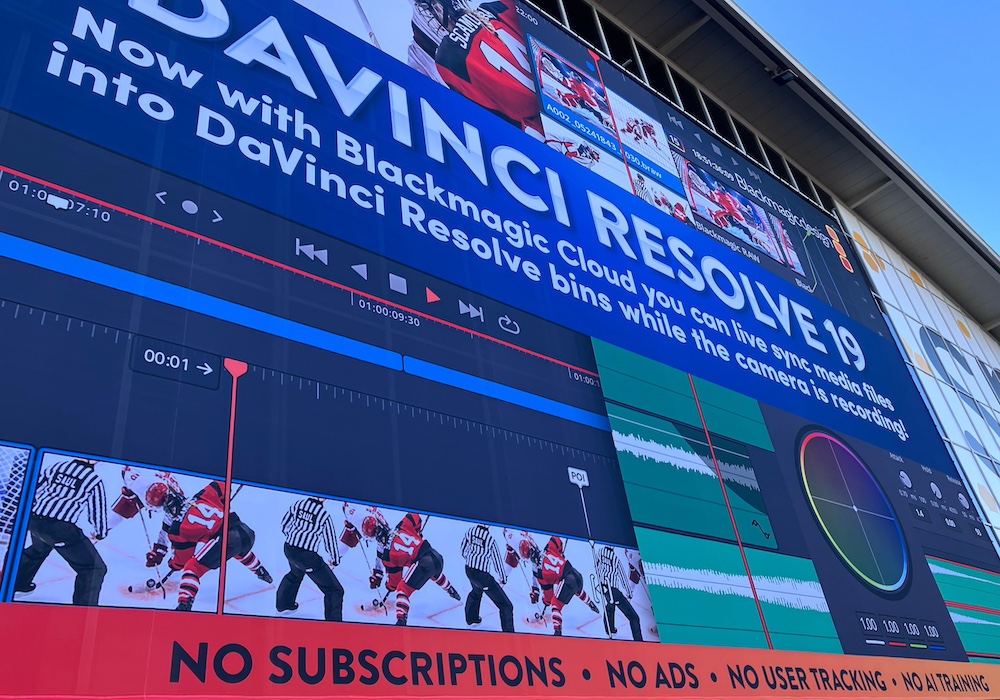Change is constant in our industry now.
What does that mean for broadcasters, streamers, podcasters and catch-up services?
During the massive four day IBC Conference and Exhibition in Amsterdam Steve Ahern aims to find out some answers to that question for you.
Artificial Intelligence
The hot topic this year!
We have been using AI for years, we just didn’t realise it. AI has been the power behind our second generation search engines and our assisted editing software for a long time now, but it has come out from the shadows over the past 12 months for two reasons: (1) the popularisation of AI technology through the public release of ChatGPT and (2) the amazingly fast leaps in the functionality of the technology due to massive amounts of training data gathered from users.
Did you realise that every time you installed a new piece of software and ticked ‘agree’ to ‘share data for improvements’ that you were training the AI engines in your craft? With that training data the AI engines behind video and audio editing software have learnt what frequencies to cancel out to neutralise background sounds and how to create colour balances and realistic shadows in your videos.
With millions of hours of training data from producers and editors all over the world, AI can now improve your audio and video in seconds. I saw plenty of examples of this at IBC24, where consumer level products such as Cleanvoice are available to everyone, or the same AI tools are integrated into professional level video and audio editing software. The difference between the free consumer and the professional level products is that the consumer products that are freely available on the internet continue to use data from their users to improve the AI for everyone, while the paid professional level tools generally keep the learnings within the company that bought the software. This was a big theme at IBC24.
One massive poster outside an exhibition hall promised that the product, DaVinci, would not use your data to train AI. It also promised ‘No User Tracking, No Ads and No Subscriptions.’ DaVinci has tapped into the segment of the professional broadcast and editing industry that does not want to give away its craft expertise to the entire internet via AI. But for non-professional users there are plenty of other ‘open source’ online tools that will deliver what’s required to anyone. No value judgement, simply an observation.
When the internet began and social media came along, there were high hopes for a very positive future from this new technology, but as it evolved we have seen social media used for division and we now understand the potential pitfalls of this technology, as well as its benefits. It is good that there is a conversation happening about the possible pitfalls of AI and the need for guard rails. There was a general understanding at IBC that industry and society need to anticipate the negative effects of AI and move quickly to limit them with policies or regulation before they get out of hand.

Technological change, staff and audiences
A theme of many IBC conference sessions was innovation in the face of an uncertain future in technology, revenue and audience behaviour patterns.
“We are learning as we go,” said Grace Boswood from the UK’s Channel 4
Boswood’s top priorities for this year are to move into a “technology stabilization phase and work out the best tactics to continue to make revenue for us and for our most loyal customers.”
Opening IBC’s technology conference, Sasha Twining and Sally Watts said the broadcast and media industry knows its purpose, to “inspire, drive business, bring people together.” But how are audiences feeling at the moment and what will they need from us?
Behavioural expert Simon deJong moved beyond technology to audiences, saying we are in a time of ‘polycrisis,’ multiple crises affecting us all at the same time. Dion said we need to understand how our audiences and advertisers are feeling at this time.
People behave differently in a polycrisis situation rather than in a single crisis. He used the metaphor of being shipwrecked then finding your way to a sandbar in the middle of the sea. “When covid came we got shipwrecked. We made it to land, but found that it was only a sandbar. We see something in the distance, is it a rescue boat? No, it’s another big wave, a war, a new disruptive technology. How would you feel in that situation?”
He said people have a mix of positive and negative emotions. “I’m happy I’m not drowning, but I am stuck here bracing for the next wave… hopping from positive to negative emotions.”
Other characteristics of a polycrisis are:
- Your staff and customers are tired. Expect that they will not behave consistently and that they may need rests from news or technology change.
- If you are bringing in change in your organisation your staff may think ‘can’t we wait a while longer to embrace this change.’ Anticipate that feeling and plan carefully.
- People are constantly bracing themselves for yet another next wave of change, so fell continually tense.
How can we survive and thrive in this environment where there is low trust of systems, constant vigilance or change avoidance? “People are seeking information from people they trust. They are seeking connection, but not always through standard media, society or government channels,” said Dion.
“Growing up in a polycrisis has made the younger generation view the future as negative and scary because they have grown up in constant crisis. This is the biggest difference between the younger and older generations. We need empathy and understanding between generations and a culture that recognises and appreciates each other,” he said.
AI in editing and storage
Visual software company VIDA has integrated AI into its storage and playout systems, making it easy to identify content in movies more quickly that a shot-logger could do manually in the past. Automatic language translation, picture elements such as violence or nudity, and undesirable activities such smoking can now be identified by AI and flagged or removed automatically, as VIDA’s Symon Roue demonstrated to me.
The Vida software is also being used to store, index and archive BBC radio programs.
Bubble Gum AI
When I teach students how to do a good radio voice break I sometimes use an analogy I call ‘bubble gum content.’ Bubble Gum Content is something that is sweet and colourful for a few moments, but delivers absolutely no nutrition. I encourage them to spit out the bubble gum and instead add substance to their content.
In the same way, I am seeing lots of non-nutritious, meaningless Bubble Gum AI Generated content on the internet that, at first glance, is well written, appears logical and seems credible if you skim it, but if you take the trouble to actually read for substance you will find nothing tangible there. I see it in many AI generated customer reviews, aggregator websites, in supposed product reviews, news articles and label descriptions on supermarket goods. I read the back of a wine bottle the other day that used well written but meaningless flowery language that did not once describe the taste of the wine.
I mention this because here at radioinfo, real people write these articles. We hold ourselves accountable for our opinions and we acknowledge mistakes and valid alternative viewpoints we didn’t think of when we wrote our articles.
We’re not luddites, we use the latest tools and will inevitably use more AI in our workflow. When that happens we will disclose what AI tool we used and how we used it.
In that spirit, I can tell you I have used a paid version of Cleanvoice AI to clean up the noisy exhibition hall background noise in my video interviews. I used a Rode iPhone external microphone when recording the videos, which I really value to get directional audio in noisy environments. I could have cleaned up the audio myself, which I have done manually many times by manipulating the EQ in my audio tracks, but Cleanvoice now saves me a lot of time in this process, that’s why I use it. Cleanvoice can also give me a transcript, which I find to be about 90% accurate, depending on the accent of the person speaking.
Now that I’ve saved 30 minutes of audio editing, I’ve got more time to write the next article. Stay tuned, there’s much more to come over the next few days as I analyse trends from this year’s IBC Conference.
About the Author:
Steve Ahern is the founder of the radioinfo, podcastinfo and audioinfo trade publications. He works in journalism, radio, multimedia and is an international trainer and consultant. Steve has worked at the ABC, AFTRS, and is co-founder of the RadioDays Asia conference. He is the author of the text book Making Radio and Podcasts, now in its 4th international edition (a new edition coming next year).


